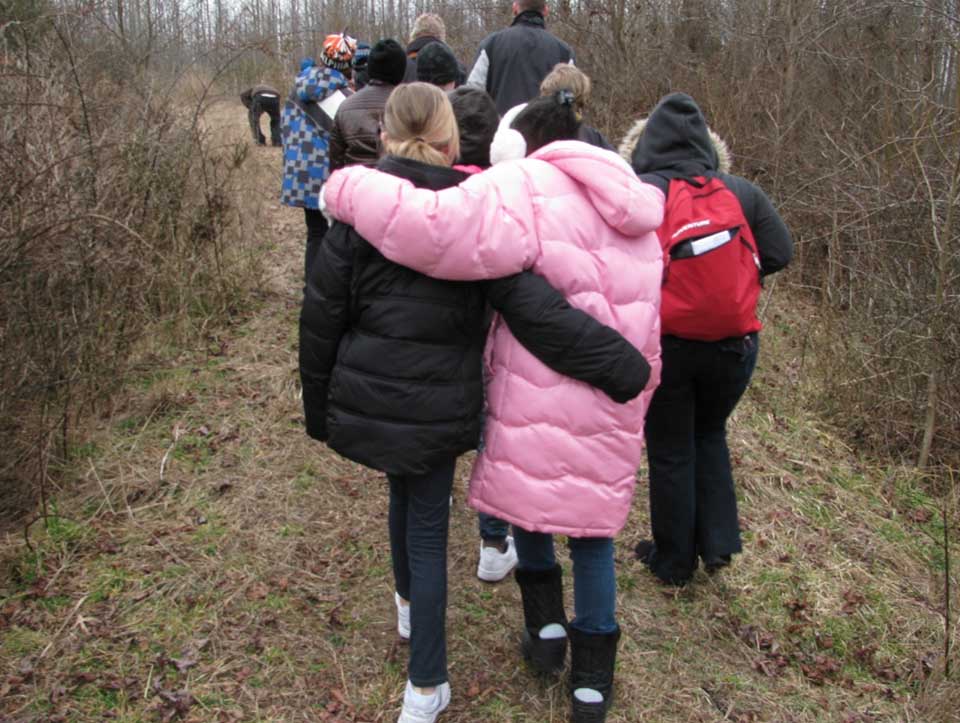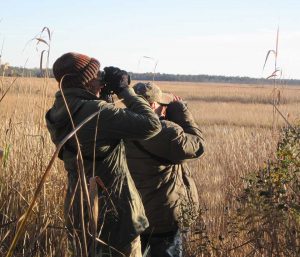Staying Warm, Head to Toe
You can enjoy the wonders of winter in comfort; it just takes matching the right fabrics and gear to the elements you’ll encounter. Read on for great tips.


As a child, I played in the snow until my feet felt like they were going to turn to popsicles. My mother dressed me with such bulk that if someone were to push me at the top of a hill I would have rolled into the next county. Most of us kids in the neighborhood looked as wide as we were tall.
We didn’t have the money for down jackets, only fiberfill, and there weren’t the array of fabrics and gear that are available today. There are some tricks to staying warm beyond sleeping with three dogs or jumping into a sleeping bag outside with nothing but your skivvies and another like-minded soul.
So the question is, “How do you stay warm outside on a cold day, so you can enjoy the wonders of winter?” Am I always warm when it is really cold outside? Well, no, because I often cut corners in selecting my apparel. Sometimes I’m just running from the car to the store and I want to be comfortable during the time I spend inside. Planning is key.
However, one of my bubbles burst while I was researching for this article. For years it has been my understanding that 50 to 60 percent of your body heat can escape via your head, so a hat is essential to staying warm. Now I’ve learned that this is not accurate.
Many sources say this widely held myth was perpetrated by a U.S. Army military experiment and subsequent 1970 survival field manual. Other references still contend that 40 to 45 percent of our body heat is lost though our neck and head due to increased blood flow in comparison to the rest of the body. Those same informants propose that if you add the wrist and ankles the loss increases to 60 percent (CentraCare Trauma Services, K. Sirmons, MD).
In 2008 a report in the British Medical Journal documented studies that found that only seven to 10 percent of heat loss is possible from one’s head because that is the only region that’s exposed, and radiated heat loss can’t exceed the exposed surface area. However, it is also true that ears, nose, cheeks, hands, and feet have special blood vessels that help control your body temperature.
So presuming you went out in cold weather in nothing but your Speedo swimsuit, would you be cold? Absolutely. And if you wore the proper apparel but no hat, would you be cold? Most likely. Basically the Army manual was giving the same good advice as your mother; it was only the percentage of loss that was a fallacy. Therefore, wear a hat!
Working from the top down let’s address the increased blood flow in your neck. A ring with a balaclava is a fantastic piece of apparel. It covers those heat-regulating ears. I used to shoot competitively and I found on hot days that when I removed my earplugs, I really cooled down. No science here, just experience. A fleece neck ring with an attached hood made of a material that wicks away moisture is a great apparel addition. I really like a product called Turtle Fur Shellaclava; it features Chelonia 150 fleece, a midweight material with sun protection, and a thin Lycra shell over your head and ears. Experts say Merino wool is the go-to item for a balaclava, but I like my Turtle Fur.

Selection of layers on your torso is critical. Outer layers of clothing such as your hat and jacket should have a tight weave that repels wind and precipitation to prevent you from getting wet. But it also has to breathe to keep you from getting soaked by your own perspiration. Today there are many engineering marvels in fabrics to help achieve both. Some clothing also has ventilated spots to allow moisture to escape.
Your middle layer is about insulating materials like down, Polarguard, Hollofil, and Thinsulate. These layers must also breathe and be able to wick moisture away from your skin. My husband got an electric vest for Christmas that has a battery charger and settings. It is very thin, lightweight, and high-tech (show off).
It is necessary for the inner layer to incorporate wicking action—to keep moisture away from the skin, and also to dry swiftly. Cotton is normally considered the worst choice because it retains moisture and dries slowly. In my opinion finding the manmade fabrics that wick and dry quickly, but don’t promote perspiration, is tricky. A polyester Spandex combo is the answer but the problem comes in the weave. You will probably have to experiment with various products. Many might have about an 88/12 poly-to-Spandex ratio but the technology makes a difference. I like one called Armachillo; it’s a summer wear product that wicks away and helps you cool off, but in combo with an insulated layer it can meet a winter criterion. Many of my friends swear by Under Armour’s ColdGear undergarments. Many outdoor gear aficionados swear by a Merino wool t-shirt or turtleneck, underwear, and thermals.
Let’s return to those areas that control your body temperature because that is where I have had some great success offering tips. Mittens are warmer than gloves. They work the same as the sleeping bag when suffering from hypothermia, but instead of jumping in the sack with your unclothed mate, you let your digits skinny-dip together. However, if you are like me the lack of dexterity can be frustrating. I like convertible, or pop-top mittens, but they are not created equal and wearing the proper weight for the day is important.
Some of the convertible mittens are fingerless when folded back and others have cloth digits. The trick is getting windproof ones. If you want to get a souped-up pair for cold conditions Hotshot makes an incredible product, complete with a zipper area for your hand warmer and a magnetic clasp to keep the folded-back mitten from flopping around.
This leads me to a discovery I‘ve made; most people use hand warmers incorrectly. Remember the special blood vessels we mentioned earlier? Well, they are on the top of your hand, not on your palm. So slip the hand warmer in your glove, then slip your hand beneath it. What you want is the heat on the top of your hand warming the blood.
 Many hand warmers are filled with shavings of iron that react with air and a catalyst such as salt. They are packaged in airtight plastic to keep the chemical reaction from happening until you expose them to the air. They normally take 15 to 30 minutes to really heat up and depending on the brand they last from one to 10 hours. I’m not getting a commission from HotHands but they are purported to last up to 10 hours. They have remained warm for the length of time that I would commonly be outdoors for a nature hike—two to six hours. You can also take them out of your glove and give them a little aeration that in my non-chemist opinion reinvigorates them.
Many hand warmers are filled with shavings of iron that react with air and a catalyst such as salt. They are packaged in airtight plastic to keep the chemical reaction from happening until you expose them to the air. They normally take 15 to 30 minutes to really heat up and depending on the brand they last from one to 10 hours. I’m not getting a commission from HotHands but they are purported to last up to 10 hours. They have remained warm for the length of time that I would commonly be outdoors for a nature hike—two to six hours. You can also take them out of your glove and give them a little aeration that in my non-chemist opinion reinvigorates them.
Lastly, there are those piggies who went to market. The cold earth is one way that convection chills us. A good pair of insulated boots is the answer to keep you protected from the frigid ground. Purchasing a material that breathes but also insulates is once again key. And remember the layer next to your skin can’t hold moisture, so you’ll need socks that fit that criterion. Most folks select wools; I like SmartWool socks.
Finally, never underestimate the power of the sun and protection from the wind. A pair of glasses can help block cold air flow. In southern New Jersey we don’t have a lot of topography to help with gusts, but in flat windy fields cedars make excellent wind protection. One year a group of our CU naturalists entered a sunny grove of cedars after being on a windy Delaware Bayshore marsh and it was a very welcome respite from the elements!
So now you have the necessary information to tackle those cold days. And if you handle it right with all the new fabrics available, you might not look like the Pillsbury Doughboy—but no promises.
Sources:
Life Science
National Park Service, Winter Ecology Teacher’s Guide, Glacier National Park








